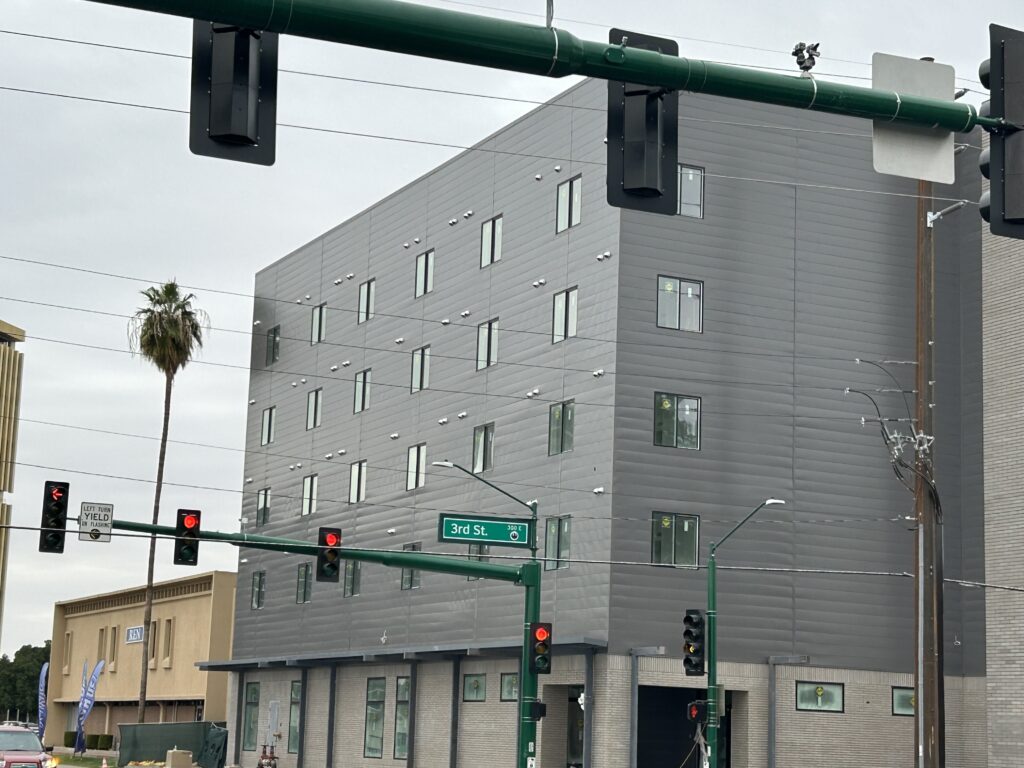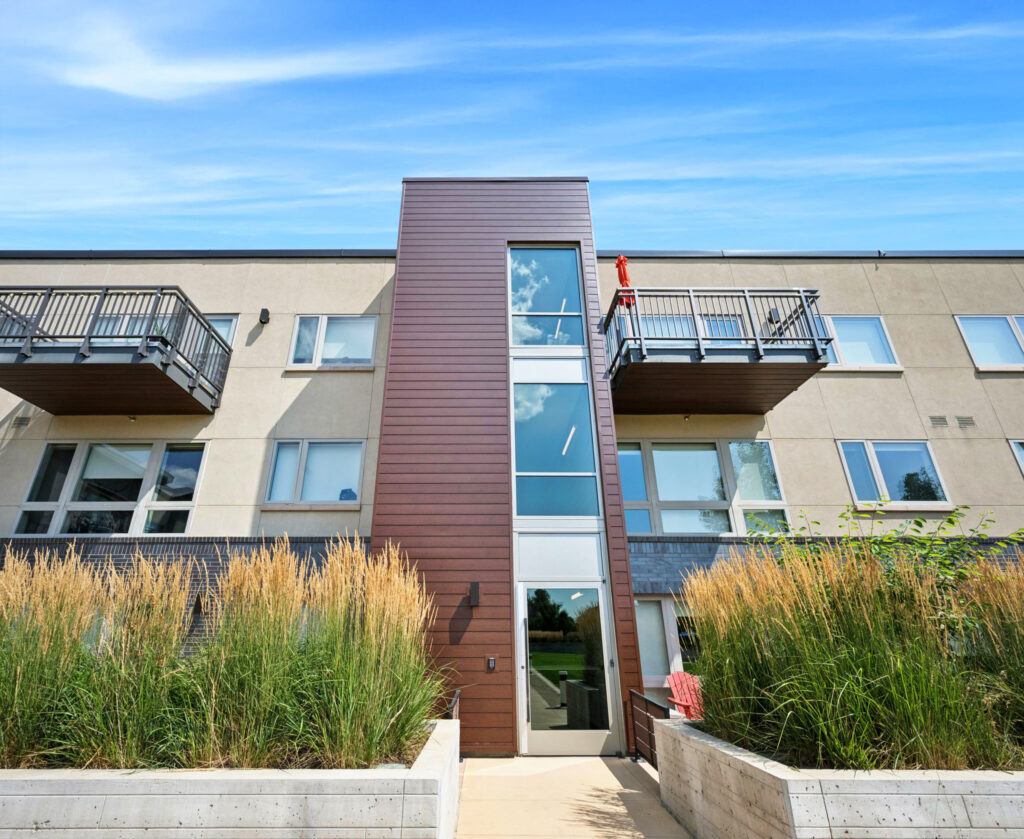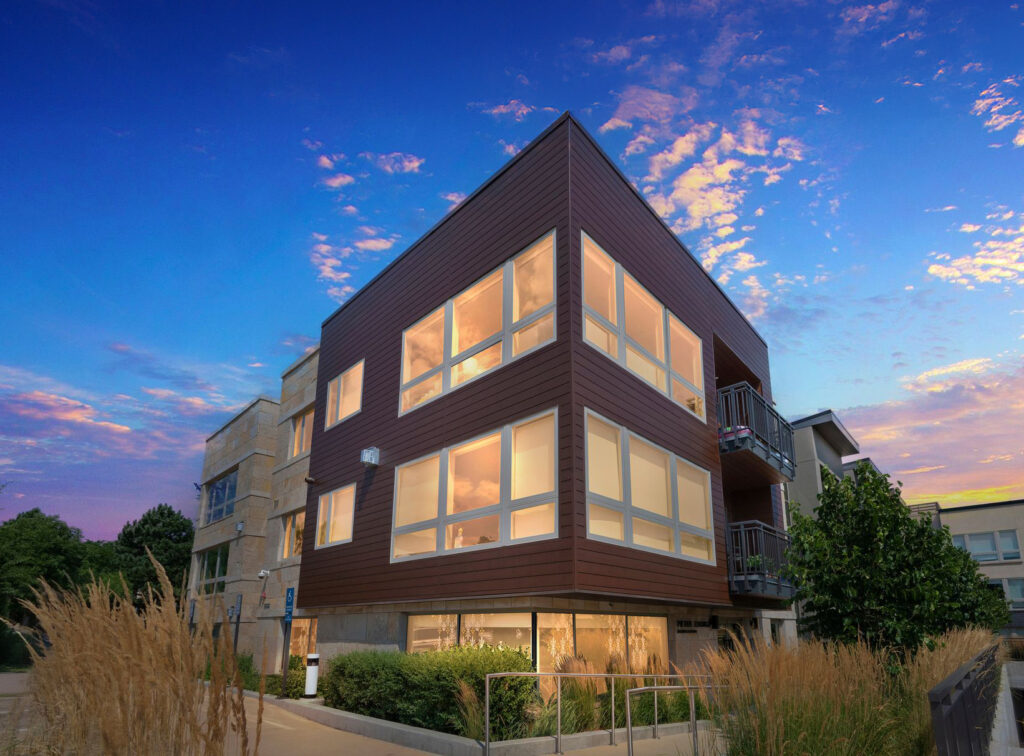The architectural metal wall panels on your building create a crucial first impression, whether you’re designing a commercial retail space, industrial facility, restaurant, or luxury residence. Selecting the right metal wall covering involves balancing factors like design flexibility, aesthetics, concealed fastening options, installation ease, maintenance requirements and long-term durability. In this guide, we compare two primary options: Single Skin Metal Wall Panels and Extruded Aluminum Wall Panels.
Single Skin Metal Wall Panels: Lighter gauge, higher risk
Single skin metal wall panels, commonly known as pre-formed metal panels, are manufactured through roll forming. The aluminum or steel begins as a coil and is fed through a series of rollers to create the desired panel profile. These exterior metal wall panels are relatively thin and are popular for their design options and cost-effectiveness compared to traditional materials like concrete or brick.
However, even the thickest available single skin metal panels (typically 22-gauge) can develop “oil-canning” – visible waviness across the panel surface. This common issue results from stresses introduced during the roll-forming process, thermal expansion/contraction, or improper fastening. While these lightweight wall systems may have lower upfront costs, they’re susceptible to distortion even under ideal conditions. Additionally, custom colors can be expensive since the entire metal coil requires coating with the specified finish.

Architectural Aluminum Wall Panels: Extruded with a purpose
Architectural metal wall panels, like Parallel’s extruded aluminum 12″ cladding panels, are created by pushing aluminum through precisely engineered dies. After cooling, the material is stretched to achieve exact tolerances. This specialized manufacturing process eliminates internal stresses, resulting in robust, dimensionally stable, heavy-gauge 3D profiles specifically designed for exterior wall coverings.
These aluminum wall panels are engineered with architectural intent, with each component designed to integrate seamlessly with others, creating a sophisticated metal wall system. The thickness and rigidity achieved through the extrusion process eliminates oil-canning concerns common in single skin panels. Due to their strength, these architectural metal wall panels often span longer distances, reducing the required sub-girts or supports compared to 22-gauge single-skin alternatives – potentially lowering overall framing costs. The wall system also guarantees concealed fastening methods for a cleaner aesthetic, whether using a 6″ panel or Parallel’s industry-leading 12″ cladding board.
For design flexibility, powder-coated aluminum wall panels make custom colors and mixed finishes more accessible and cost-effective than roll-formed products, as the powder coating process is applied by individual profile rather than entire coil. This makes these types of metal panels ideal for projects requiring specific aesthetic requirements.

In Conclusion: Exterior Wall Panels → Roll-Formed or Extruded?
When comparing single skin metal panels with extruded aluminum cladding, consider visual appeal, longevity, and design options. While light-gauge single skin wall coverings offer some cost advantages upfront, they ultimately lack the strength, rigidity, and design flexibility that make architectural aluminum wall panels superior in the exterior cladding market.
For architects, designers, and building owners who prioritize both aesthetics and performance, extruded aluminum wall panels represent the gold standard in exterior cladding. Their superior strength, dimensional stability, and design versatility make them an ideal choice for projects where appearance and longevity cannot be compromised. While the initial investment may be higher than single skin alternatives, the reduced maintenance costs, elimination of oil-canning issues, and extended lifespan deliver significant value over the building’s lifetime.

